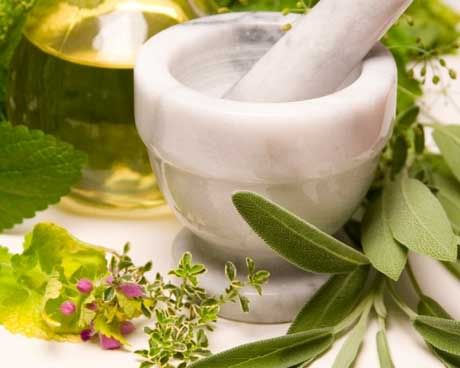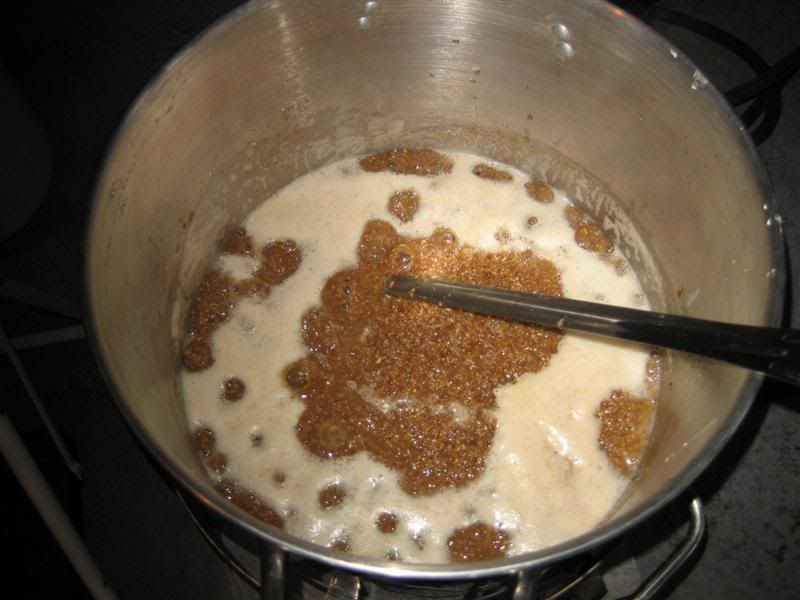Decoction, or simple decoction, is my term for an infusion which has been reduced to one-half its volume by slow evaporation. A double decoction is an infusion reduced to one-fourth of its original volume. Some herbalists use "decoction" to refer to what I call an infusion; others use it to mean something closer to tea.
Decoctions keep longer than infusions if carefully stored under refrigeration. Decoctions are more potent than infusions; this makes them invaluable when dealing with children and animals. The smaller dose is more easily administered.

Decocting is an excellent way to prepare an herb with a terrible taste, such as Yellow Dock root, so it can be consumed without gagging. Adding a bit of some nice tasting brandy or liqueur to decoctions enhances the taste and the keeping qualities.

(Yellow Dock) Looks Like Coffee, or Kawi Iyusdi Rumex crispus or Yellow Dock ,It can be used as a wild leaf vegetable; the young leaves should be boiled in several changes of water to remove as much of the oxalic acid in the leaves as possible, or can be added directly to salads in moderate amounts.[3] Once the plant matures it becomes too bitter to consume. Dock leaves are an excellent source of both vitamin A and protein, and are rich in iron and potassium. Curly Dock leaves are somewhat tart due to the presence of high levels of oxalic acid, and although quite palatable, this plant should only be consumed in moderation as it can irritate the urinary tract and increase the risk of developing kidney stones. The roots have also been used medicinally as an astringent, tonic, and laxative. Compounds contained in the plant's roots have been clinically verified to bind with heavy metals such as lead and arsenic and expel them from the body by stimulating biliary function in the liver. The plant is considered a highly effective blood cleanser and is used by herbalists to assist the body in eliminating heavy metals and to treat other This plant is not only a medicinal herb, but also a food. It is much like spinach, but believe it or not, contains MORE vitamins and minerals. Because of the long taproot, it gathers nutrients from deep underground. The leaves are a source of iron, and also have laxative properties. Juices from the stems, prepared in a decoction, can be made into an ointment with beeswax and olive oil, and used for itching, minor sores, diaper rash, and other irritations. Cherokee herbalists prescribe a warm wash made from the decoction of crushed roots for a disinfectant. Juice from the root, not prepared in any certain way, is said to be a cure for ringworm,Yellow Dock Root helps to eliminate toxins from your body. In this manner, Yellow Dock Root effectively aids in eliminating foreign substances that can overburden the liver.
Decoctions of roots and barks are often prepared; decoctions of leaves, flowers, or seeds are rarely prepared. Since decoctions are made by evaporation, the volatile essences are water-soluble vitamins in the leaves, flowers, and seeds are lost in the process.
I always make decoctions when I have to be in the same room as the stove for the entire evaporating time. With such a low heat, decoctions rarely burn, but if you become involved in something else, there is the danger of reducing the liquid to a scorched nothing. For a pint of infusion (two cups), about an hour is needed to reduce it by half.

Making a Decoction
Begin by straining the plant material out of the infusion and discarding it.
Measure the liquid.
Heat the liquid until it begins to steam; this is before it simmers and long before it boils.
Stand right there and watch for the steam to start rising. When it does, turn the heat down very low.
Steam until the liquid is reduced to half or one-quarter of what it was in the beginning. A little stainless steel pan with measuring marks on the side is of invaluable assistance in this process, but you can also judge by the mark left on the side of the pan as the liquid level falls. Or you can measure it.
Pour the decoction into a clean or sterile bottle.
Label with the contents, strength, and date. Example: Simple decoction of Witch Hazel bark, Dec. '84.
Optional: Add one tablespoon of brandy or spirit per four ounces of decoction.
Cap well
Cool at room temperature, then store in the refrigerator. Some decoctions may keep for as long as a year, others ferment and sour within a few months.
Dosage: A simple decoction is four times as potent as an infusion. One cup (8 ounces) of infusion is equal to one-quarter cup (2 ounces) of a simple decoction. Use up to one tablespoon for an infant.
Double decocting increases the strength of the infusion by a factor of sixteen (four times four). So the dose equivalent of one 8 ounce cup is only one tablespoon (1/2 ounce). The usual infant dose is half a teaspoon of double decoction.
Making a Syrup
Add sugar or honey to any type of decoction, and you have a syrup. The extra sweetness makes some herbs more palatable, soothes the throat, and can improve keeping qualities.
How much sugar or honey should you add? The exact amount is determined by weight. A standard for syrups is an equal amount, by weight, of sugar and decoction.
One cup (8 fluid ounces) of water or decoction, weighs half a pound (8 ounces). So one cup of decoction requires half a pound of sugar.
Honey is about twice as sweet as sugar. Use a quarter of a pound (4 ounces) of honey to every cup of decoction. One level tablespoon of honey weighs about one ounce.
Add the sweetener to the hot liquid
Increase the fire until the brew just comes to a boil.
Pour the boiling hot syrup into a bottle and cap it. Sterilized bottles reduce the risk of producing unexpected herbal fermentations. But the boiling liquid kills many yeasts in the bottle.
Optional: Add one tablespoon of brandy, vodka, etc. to further stabilize the syrup.
Store the syrup in the refrigerator once it cools. Syrups keep for 3-6 months.
Depending on the herbs in your original infusion, you can make a cough syrup (Comfrey root and Wild Cherry bark), an iron tonic (Yellow Dock and Dandelion roots), a soothing syrup (Valerian root), or any other medicinal syrup.
Dosage: Generally, one teaspoon of syrup is a dose for a 125-150 pound person. The dose is repeated as needed, up to 8 times daily. Use a half teaspoonful for 60-75 pound children and a quarter teaspoonful for 30 pounds or smaller.
Summary of Syrup Proportions
Begin with one pint (16 ounces) of infusion
Reduce the liquid to half its original amount (8 ounces).
Add an equal amount, by weight, of sugar (8 ounces or 1/2 pound), or half the amount, by weight, of honey (4 ounces or 4 tablespoons).
You are just a wealth of information Sister Love! :) Thanks a billion for your writings, always!
ReplyDeleteMuah! I be lovin' ya and Happy Holidays, he he!